

Explore Italy by place | region | time period
19 century in Italy » Canino (Viterbo, Lazio)
Marie Laurence Charlotte Louise Alexandrine de Bleschamp, born in Calais (1778-1855), was a French aristocrat noted for her exceptional qualities. In 1798, she married the banker Jean François Hippolyte Jouberthon de Vanbertie (1763–1802), gaining the social title of Madame Jouberthon. Widowed by 1802, Alexandrine became the second wife of Lucien Bonaparte, Napoleon I’s younger brother, in 1803, becoming a member of the French Imperial family.
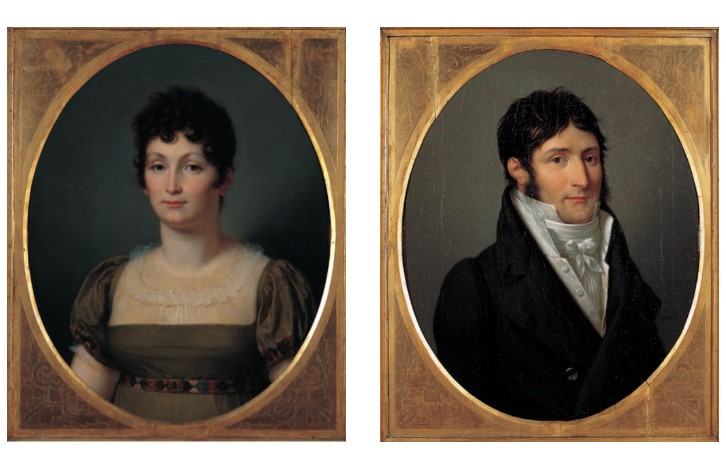
Luciano had an adventurous youth: at the age of 15 he was brought to France by Mr Semonville, who soon made him a zealous revolutionary, and an ardent clubber ...
- Napoleon I
During the years of the Directoire and the Consulate, Lucien Bonaparte held significant political roles. However, his rebellious nature led to conflicts with his older brother, Napoleon. Lucien married two women against the will of the emperor, resulting in his exclusion from all hereditary rights and sentenced to exile.
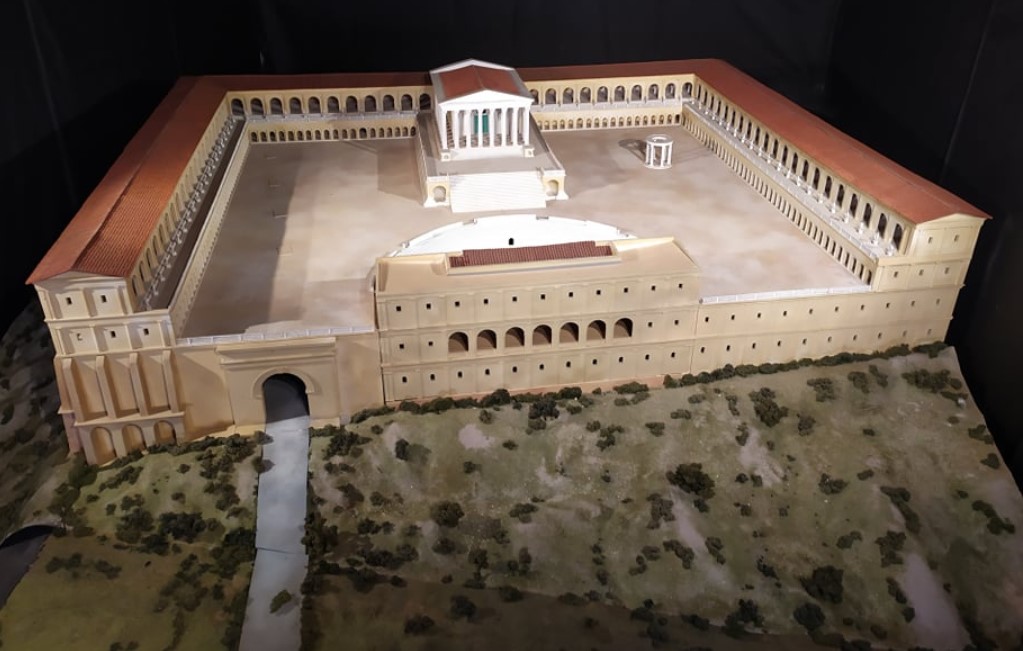
In 1800, his wife Christine Boyer died from a prolonged illness while expecting their third child. A few months later, Napoleon appointed Lucien as ambassador to Spain, aiming to foster productive collaborative relations between the two nations.
In 1802, Lucien Bonaparte returned to Paris and met the young Alexandrine de Bleschamps, recently widow Jouberton and mother of a child. In that year, he purchased the Villa of Mecenate in Tivoli and transformed it into a cannons foundry. He built an industrial complex on the Tiburtino hill near the ancient Via Tiburtina, where the ferrous material from Elba Island (about 340 km away) was processed and manufactured.
From the 16th century until nearly the mid-19th century, it was believed that these ruins were the Villa of Mecenate, while it was later discovered that they were the Sanctuary of Hercules Victor on the outskirts of Tivoli. Built in the mid-2nd century BCE, the sanctuary spanned about three hectares and was a monumental five-story structure, with the lower levels used for commerce and the upper levels for worship. Thanks to the hydraulic energy from the nearby ancient Roman aqueduct derived from the Aniene River, the sanctuary evolved into an industrial site over the centuries. In 1612, Pope Paul V converted it into a weapons factory producing armor and artillery for the Church. In the 17th century, it served as a powder magazine, and by 1795, under Pope Pius VI, it was once again a weapons factory.
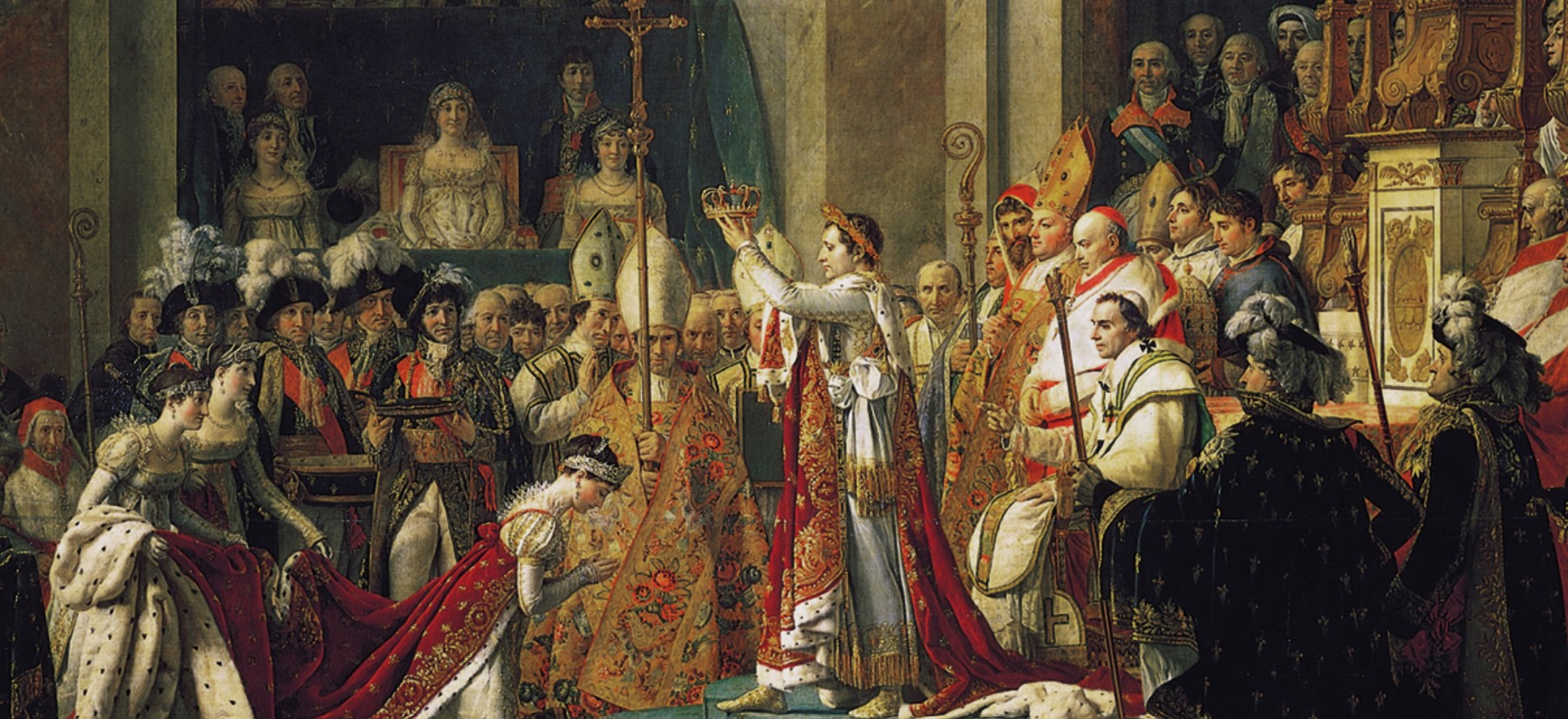
In 1803, Alexandrine and Lucien Bonaparte celebrated the birth of their first child and also their marriage. The whole Bonaparte family was not made aware of this event until later, as Napoleon had envisioned a politically advantageous marriage for Lucien. This secrecy and defiance led to Lucien's exclusion from the grandeur of Napoleon's Coronation on December 2, 1804, in Paris, attended by 12,000 guests.
According to legend, during the coronation ceremony, Napoleon took the crown from Pope Pius VII and placed it on his own head, symbolizing his rejection of the Pope's authority. On the flip side, the pope will assist the rebellious brother of the emperor multiple times in economic difficulties.
Lucien was stripped of all hereditary rights and forced into exile. The rift between the brothers was so profound that Lucien, feeling misunderstood and overwhelmed, uttered a terrible sentence against his brother:
I honor him [Napoleon I], I respect him, I admire him as head of government, I no longer love him as a brother.
- Lucien Bonaparte
In 1804, after irreconcilable disputes with his brother, Lucien sought refuge in Italy. He relocated with his entire family to a place near Rome, where he formed a friendship with Pope Pius VII.
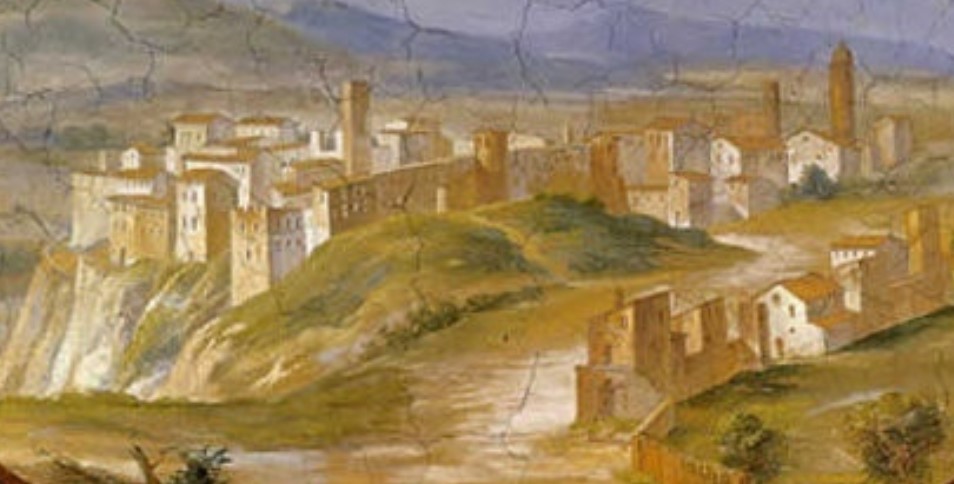
In 1806, Lucien began negotiations with the Apostolic Chamber to purchase the fief of Canino near Viterbo, along with approximately 8000 hectares of land. The area was wild and harsh, plagued by malaria in the summer and distant from civilization. This isolation appealed to Lucien's restless and contemplative nature, and he remained attached to these lands for the rest of his life. It was a place removed in space and time from France and Europe, just as the Old World was being upended by his brother Napoleon's exploits.
Among the properties, la Ferriera was included. It was an ironworks with a furnace for producing cast iron and a machine for extracting wood to make charcoal. The ferrous material was always from Elba Island (about 210 km away). Thanks to it, Lucien Bonaparte became one of the leading iron industrialists in the Papal States in the early 19th century. Acquiring this land likely made him feel fully integrated into the Roman patriciate.
In 1808, Lucien bought the land that the Apostolic Chamber owned in Canino and settled at the Castle of Musignano. The pope later elevated this estate to a principality for him.
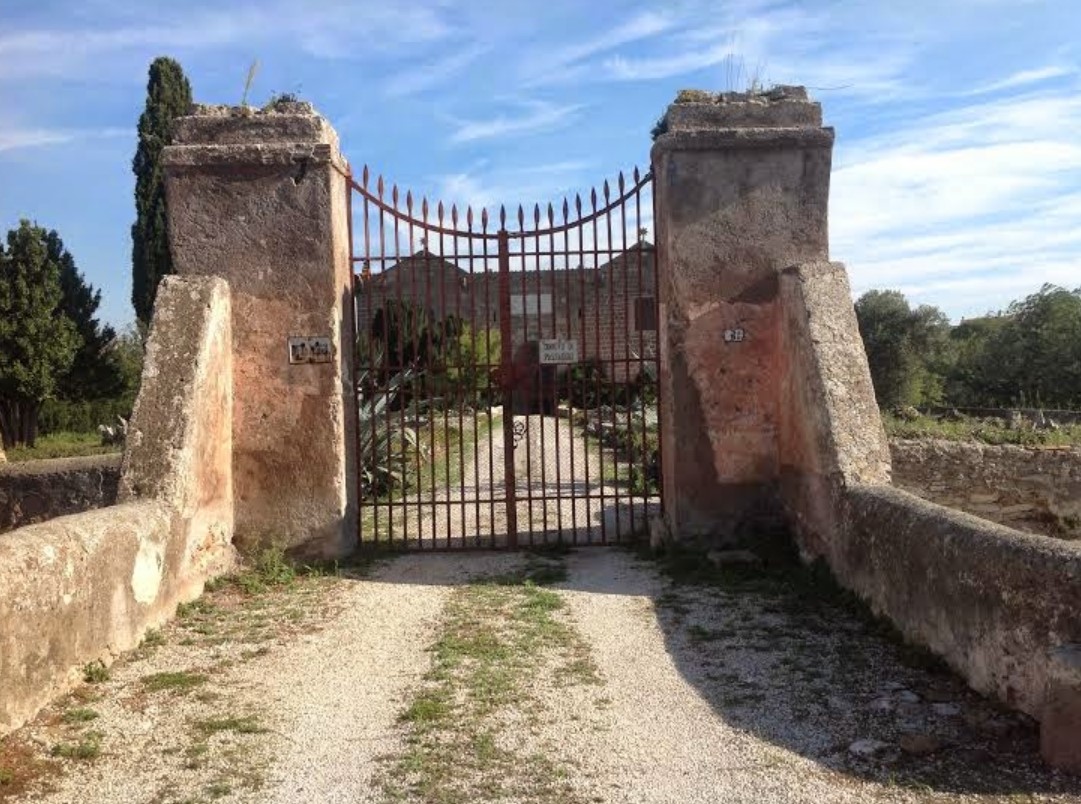
In 1809, the territories of the Papal States were annexed to the French Empire. Letizia Bonaparte tried to reconcile her sons, Napoleon and Lucien, but her efforts were unsuccessful. Consequently, Lucien decided to leave Italy for the United States. His escape was intercepted off the coast of Sardinia, where he was captured by the British in 1810.

In 1814, Napoleon was defeat at Leipzig, abdicated and was exiled to Elba Island. During this period, Lucien Bonaparte wrote to Pope Pius VII requesting permission to return to Italy and be granted a noble title to save himself. He was eventually allowed to return to Rome, where Pius VII appointed him as Prince of Canino, thus making Alexandrine de Bleschamp the Princess of Canino.
At that time, he faced significant financial difficulties and was compelled to sell his Roman properties. His economic troubles were largely due to his extravagant lifestyle in Rome and the loans he had extended, particularly to his mistress, the Marquise of Santa Cruz, who never repaid him.
Despite these challenges, the relationship between brothers improved during Napoleon’s exile. In 1815, when he returned to Paris, Lucien followed soon after to support him in the final battle against the Seventh Coalition forces. In Paris, Napoleon honored his brother with the Legion of Honour.
The defeat at Waterloo marked the end of Napoleon's ambitions. With he destined for Saint Helena, the victors permitted Lucien to return to Rome, on the condition that he remained within the Papal States. He accepted this arrangement and settled back in Rome, though he was subject to special surveillance due to suspicions of his involvement with secret societies plotting against the Papal States.
In the years that followed, Lucien focused on his interests in epic poetry and astronomy. In 1824, Pope Leo XII granted him the title of Prince of Musignano and, Alexandrine de Bleschamp became Princess of Musignano.
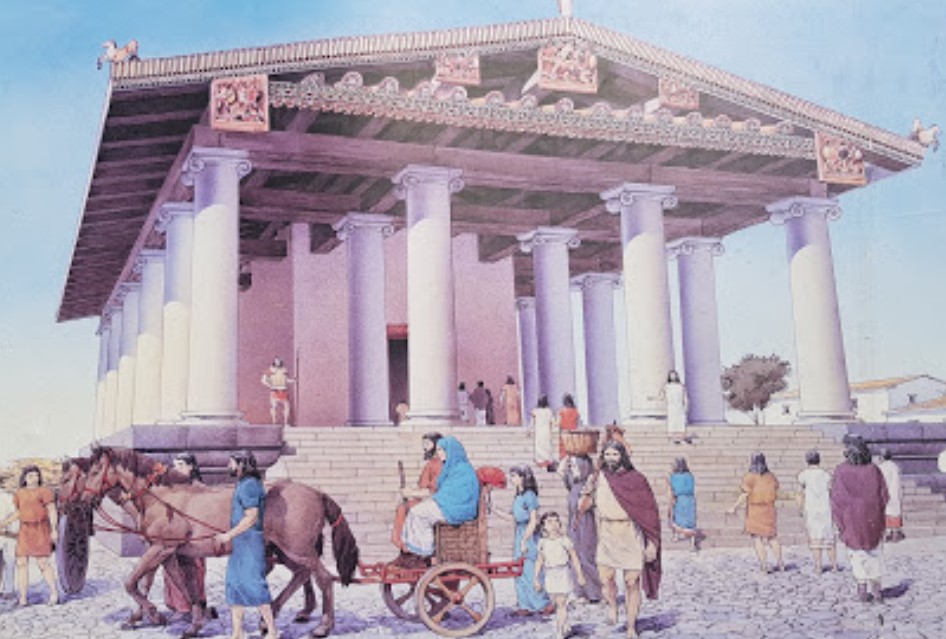
In 1828, the ancient Etruscan city of Vulci, near Canino, was discovered. Thousands of ancient tombs were unearthed, and the Bonaparte family became the owner of 2,000 ancient vases with the first excavation.
Vulci or Volci (Etruscan Velx, Greek Velzna) was a wealthy Etruscan maritime city located in what is now northern Lazio, about 80 km northwest of Rome. It was one of the legendary dodecapolis, an Etruscan League formed to protect their interests. Vulci's expansion began during the Orientalising period of the 8th century BCE, marked by the production of bronze objects that appeared in Greece towards the century's end. The 7th century saw the import of sophisticated products from many Mediterranean markets, highlighting Vulci's growing wealth and culture.
The city reached its peak of influence and wealth in the 6th century BCE, becoming a center for importing refined Attic pottery, precious oriental balms, and exquisite jewels for its affluent citizens. This period is evidenced by numerous masterpieces of Greek and Etruscan art found in the tombs. Vulci exported its treasures, including pottery, bronzes, and wine, throughout the Mediterranean.
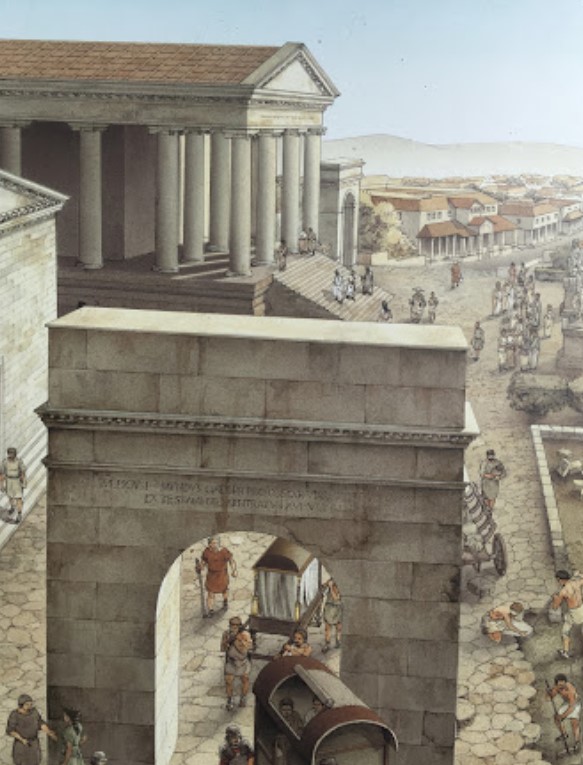
After the population of Rome became predominantly Italic, the Etruscan kings were overthrown, leading to a period of crisis in the latter half of the 5th century. However, Vulci experienced a resurgence in the 4th century. The Romans eventually took control of Vulci's coastal regions, which diminished the city's power and contributed to its decline. The Etruscan League disintegrated during the war, and the Etruscans were gradually assimilated. Vulci's significance waned during the remaining Roman period.
Vulci was so well known, that it was included on the Grand Tour of Europe. Today, visitors can still see the remains of the city and its necropolis.
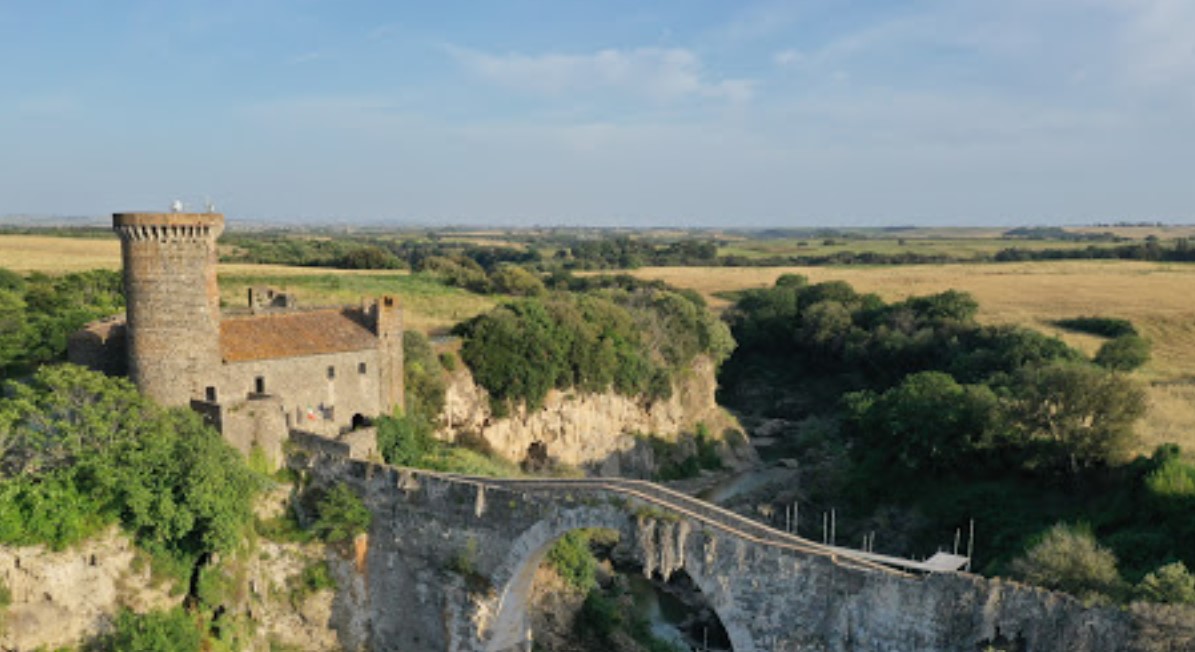
News of the discovery of Vulci and its treasures reached Lucien while he was staying between Bologna and Senigallia. Alexandrine went to Canino to start the excavations, and a few months later, Lucien joined her. This marked the beginning of the archaeological pursuits of the Princes of Canino. Lucien immersed himself in archaeological studies, his newfound passion. The excavation work, initiated and supported by the couple, uncovered immense wealth. They preserved and sold the most valuable artifacts to museums and private collections worldwide to generate income, while items considered less valuable were destroyed.
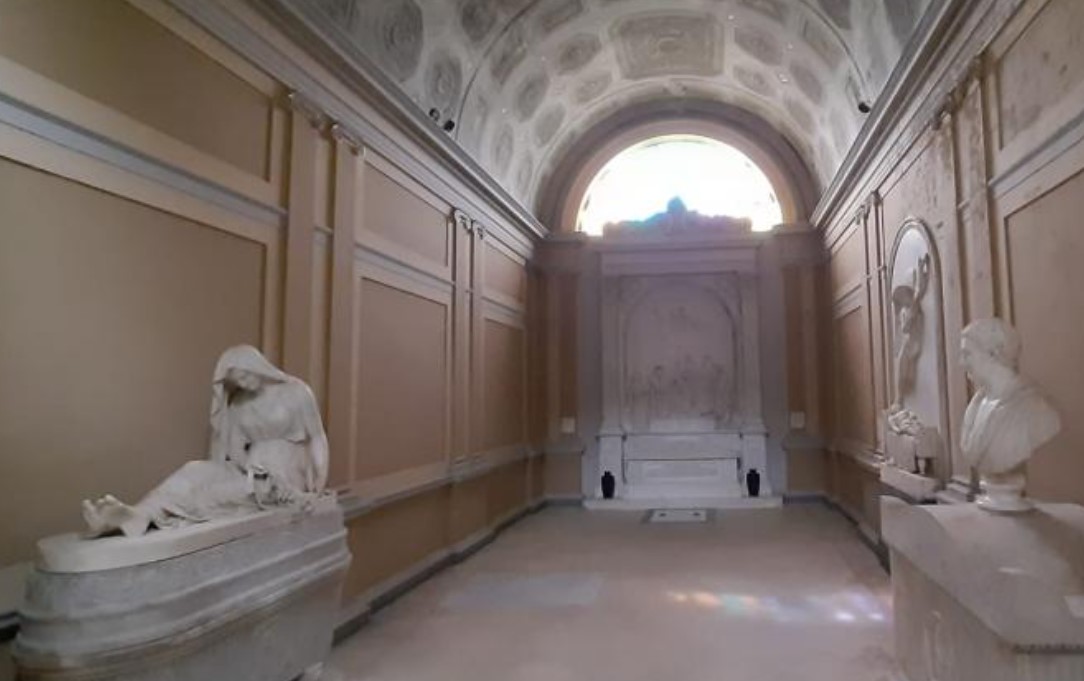
In 1836, Lucien began experiencing the same stomach pain that had afflicted Napoleon in 1821. He died in Viterbo in 1840 at the age of 65. His body was deposed in the Bonaparte Chapel inside the Collegiate Church of SS Giovanni and Andrea at Canino, where he rests alongside his young son, his two wives, and his father, Charles Bonaparte (1746-1785), who died when Lucien was 9 years old.
Lucien's life, characterized by political intrigue and personal ambition, reflects the complex relationships and turbulent times of the Napoleonic era.
Stendhal calculated, in March 1837, that those vases had yielded 700 thousand francs to the Prince, a figure that would rise to 1,200,000 francs in 1840. After Lucien's death, his family faced serious financial difficulties. Excavations he had initiated were halted in 1840 upon his death, but his widow, Alexandrine, resumed the efforts until 1846 with varying success. The primary aim of the Bonaparte family during this period was to restore their consistently precarious finances, which were constantly in crisis. The Musignano castle was sold to the Torlonia family, who still own it. Unfortunately, the castle remains private property and is not open to visitors.
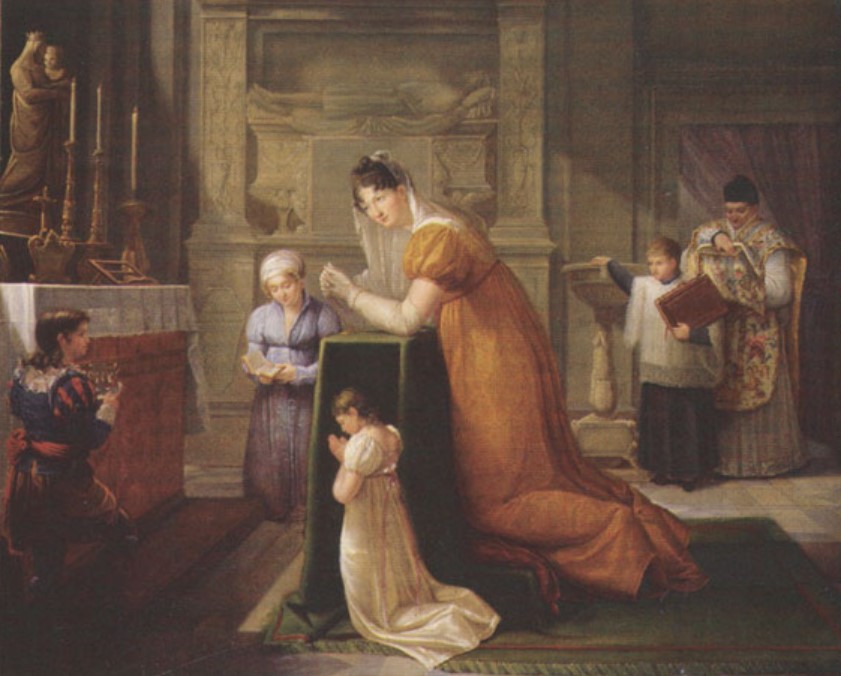
Alexandrine and Lucien had ten children together, and she played a significant role in their upbringing. Their children included notable figures such as Charles Lucien Bonaparte, a renowned ornithologist, and Louis Lucien Bonaparte, a philologist. In 1855, Alexandrine de Bleschamp deceased in Sinigaglia, Italy.
Alexandrine de Bleschamp's life was marked by her resilience and loyalty, navigating the turbulent political landscape of the Napoleonic era alongside her husband, Lucien Bonaparte.
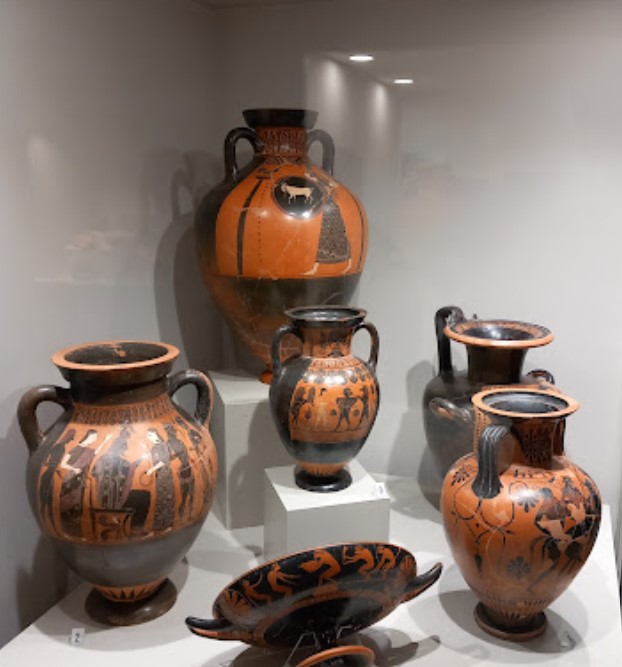
Today, we have the opportunity to appreciate the discoveries made by the Bonaparte couple in numerous museums worldwide. Undoubtedly, one of the most beautiful is a stamnos of Kleophon Painter, known as A warrior leaving home
. It is an excellent example of a painting of a departing warrior is found on Attic red-figure. This is a bell krater that was discovered in central Italy, at Etruscan necropolis in Vulci. The date range, as with almost all other Kleophon Painter vases, is 450 to 400 BCE.
The scene on side A shows the warrior flanked by two other figures; an old man who appears to be handing the warrior his helmet, and a woman who is seen holding the warrior’s shield. The old man and the woman are both wearing robes while the warrior is depicted nude, he is wearing nothing but a headband and a sheath with his sword in it. His robe is draped over his left arm which is holding his spear.
Side B shows three youths all wearing robes. The eyes, again, are all triangular in shape. The youth to the far right has his right hand up as if telling the other two youths to stop or slow down. He is facing to the left (as you look at the vase) while the other two are facing back at him. All three have very similar, almost identical faces. They all have on the same style robes and are wearing a thin headband covered somewhat by their hair.

Stamnos is the name of a form of ancient vases produced in Greece from the late 6th century BCE and the end of the 5th BCE, instead in Etruria until the 4th BCE. The earliest known examples come from archaic Laconia and Etruria, and they began to be manufactured in Athens around 530 BCE.
Stamnoi were large pottery jars for carrying wine with a foot, wide mouths, lids and handles on their shoulders. But according to literary sources, they indicated in antiquity large containers such as amphoras, not necessarily having this particular form, and intended to store a considerable amount of oil, wine and even money.
Commonly they are decorated with red figures, but they also exist in black figures.
The most recent specimens are recognized because they are slimmer and taller. Those with lids were used for storing liquids (such as amphora), or for serving wine at banquets (such as craters).
The Kleophon painter is the name given to an anonymous Athenian vase painter in the red-figure style who flourished in the mid-to-late 5th century BCE. He is thus named because one of the works attributed to him bears an inscription in praise of a youth named "Kleophon". He appears to have been originally from the workshop of Polygnotos.
The Kleophon Painter was likely located in or around the city-state of Athens, as his work was mostly discovered there. Twenty-two of the Kleophon Painter’s vases are still located in Athens at either the Agora Museum or the National Archaeological Museum.
The themes of his vases for the most part stick to a few specific genres, specifically, Greek mythology, domestic themes (including sacrifices and parades), and paintings of warriors.
Even in the 5th century BCE he shipped vases as far as Italy and Spain, according to the provenance that the vases have been found in. The majority of his vases are bigger vases, with only a few smaller ones. Most of his vases are kraters.
One painter that he was similar to was the Dinos Painter, thus is hard to distinguish between. One of the ways to identify works by the Kleophon Painter is by the characters on the vase, especially the eyes and chin. In the Kleophon Painter’s case, the eyes are usually a rounded off triangular shape and the chin is generally rounded off or even bulbous at times.
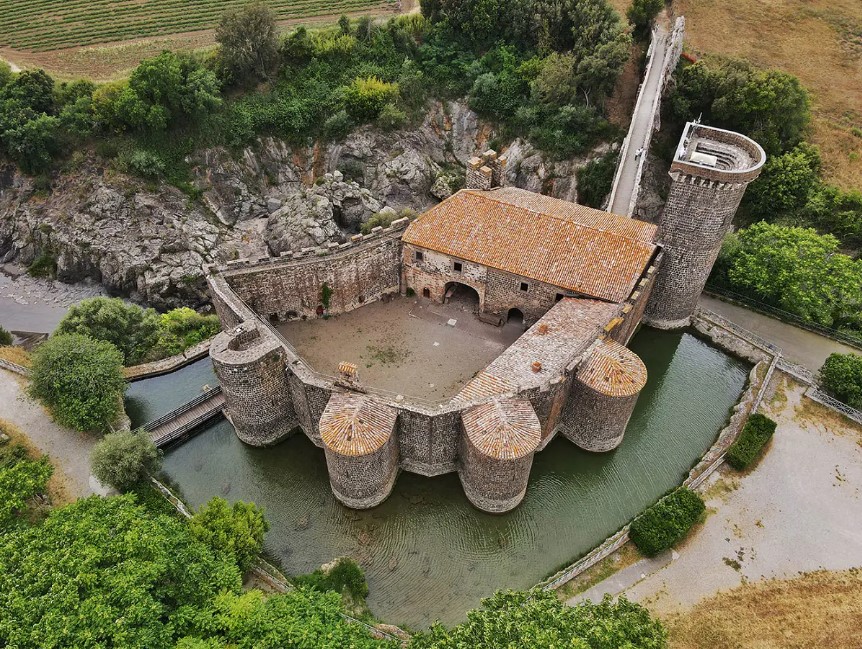
In order to know more, you can visit:
- Wikipedia: [1, 2, 3, 4]
This page was last update on 7 July 2024
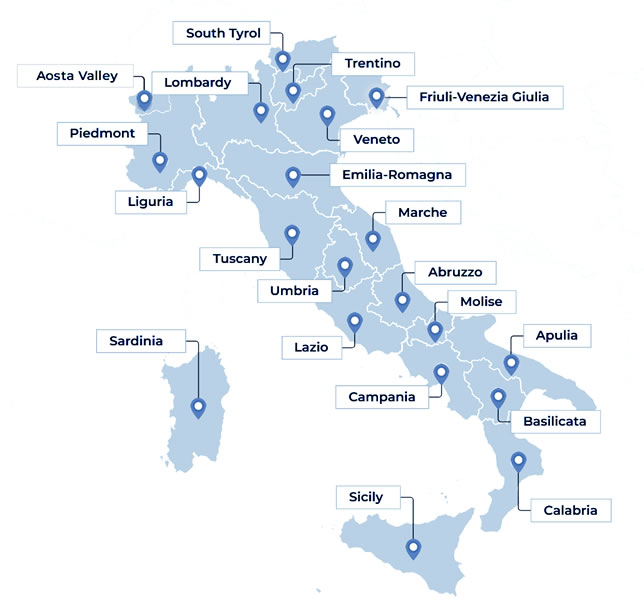
Open in Google Maps and find out what to visit in a place.
Go to: Abruzzo | Aosta Valley | Apulia | Basilicata | Calabria | Campania | Emilia Romagna | Friuli Venezia Giulia | Lazio | Liguria | Lombardy | Marche | Molise | Piedmont | Sardinia | Sicily | South Tyrol | Trentino | Tuscany | Umbria | Veneto

Text and images are available under the Creative Commons Attribution-ShareAlike License 4.0; - italystudynotes.eu - Privacy